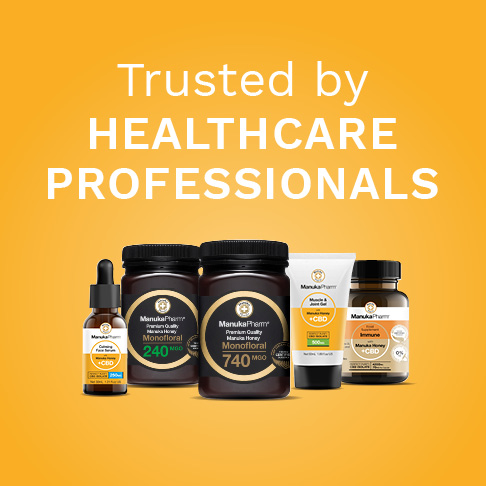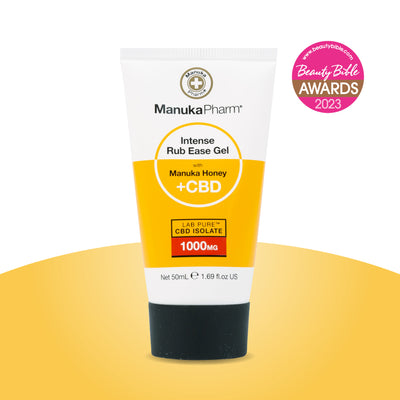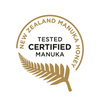If you’re living with arthritis, you’ll know that symptoms like pain, stiffness and swelling can sometimes make it tricky to carry out everyday tasks. Thankfully, there are plenty of things you can do to reduce your symptoms, boost your wellbeing and make the condition easier to live with.
Here, we share our top five suggestions.
1. Make the most of medication
Whether you have osteoarthritis or rheumatoid arthritis, there are plenty of effective medications on offer.
These fall into five main categories.
Painkillers
If you’re in pain and paracetamol isn’t helping, your GP might decide to prescribe an opioid painkiller such as codeine or Tramadol. Alternatively, you could try a compound painkiller like co-codamol (a combination of paracetamol and codeine).
Non-steroidal anti-inflammatory drugs
NSAIDs like Ibuprofen reduce pain and stiffness by combating inflammation. If you’d rather avoid taking tablets, why not try a topical anti-inflammatory such as Manuka Pharm’s Rub Ease Gel for muscles and joints? Refreshing and lightweight, this cooling gel combines three of nature’s most effective anti-inflammatories: CBD, Manuka honey and Arnica.
Steroids
Used sparingly, steroids are highly effective at reduce pain and swelling. They’re either administered orally or via injection.
Disease modifying drugs (DMARDs)
DMARDs reduce stiffness, joint swelling and damage by blocking the effects of chemicals that are released when your immune system attacks your joints.
Biologic drugs
If DMARDs aren’t effective, your hospital specialist might prescribe these powerful drugs, which target specific parts of the immune system.
2. Keep moving
When you’re experiencing pain and stiffness, exercising is probably the last thing on your mind. But physical activity can actually reduce these troublesome symptoms.[1]
As well relieving pain, regular exercise will improve your muscle strength, increase your range of movement and lower your risk of cardiovascular disease.
Keen to get going? We recommend beginning with low impact exercises such as walking or swimming. Water aerobics is also beneficial, as the buoyancy of the water will support your weight and reduce joint stress. Alternatively, why not give Tai Chi a try? Studies show that the flowing movements of this gentle art can increase strength and reduce Osteoarthritis symptoms.[2]
Whatever kind of exercise you choose, be prepared to experience some initial discomfort. If you’re worried about causing a flare up, have a word with your GP before you begin. You’ll also need to start each session with some warm up exercises, so if you’re not sure how to do this, check out the suggestions on this NHS website.
3. Try complementary therapies
Complementary therapies reduce symptoms naturally, work well with traditional medications and have fewer side effects. Options include:
• Acupuncture-A traditional Chinese treatment that eases pain by inserting fine needles into specific acupoints.[3] It works by triggering the release of pain-relieving neurotransmitters including endorphins.
• Reflexology-A form of massage that involves applying pressure to your feet, hands and ears. As well as causing the body to release painkilling chemicals, reflexology can improve sleep and circulation.[4]
• Massage- A 2018 study showed that regular whole-body massages significantly reduce arthritic pain and stiffness.[5] Hand massages are also effective, boosting grip strength and lowering hand and wrist pain.
4. Watch your weight
Maintaining a healthy weight makes a significant difference when it comes to managing arthritis symptoms, because excess weight puts pressure on weight bearing joint such as hips, knees and ankles.
If you have rheumatoid arthritis, those extra pounds could even reduce the benefits of medication, by sending out chemical signals that increase inflammation.
Along with exercise, eating well is the best way to achieve your ideal weight, so try to ensure that your meals are balanced and include a variety of vitamin packed fruit and veg. To maintain strong bones, you’ll also need to include calcium-rich products such as milk, yoghurt, oily fish and green leafy vegetables.
5. Consider Cannabidiol (CBD)
Extracted from hemp plants, CBD is a completely legal compound that contains only minute traces of THC, the psychoactive compound associated with cannabis.
Thanks to its analgesic and anti-inflammatory properties, CBD can provide significant relief for arthritis symptoms, so why not consider trying it?[6]
5 ways to take CBD
As drops
CBD oil taken under your tongue is quickly absorbed, although it can taste earthy. If you’re new to CBD, Manuka Pharm’s low strength ingestible oil is an excellent product to start with.
On your skin
Smoothing CBD infused gel onto your skin will sooth aching limbs and painful joints.
With food
For speedy absorption, add CBD oil to fatty food like eggs, meat, avocado or fish.
In capsules
These are ideal if you have sensitive tastebuds. Why not try Manuka Pharm’s Joints Capsules, which combine the pain-relieving qualities of CBD with the anti-inflammatory benefits of Manuka honey?
On the go
Quickly absorbed and pleasantly flavoured, CBD gummies are ideal if you’re on the go.




















